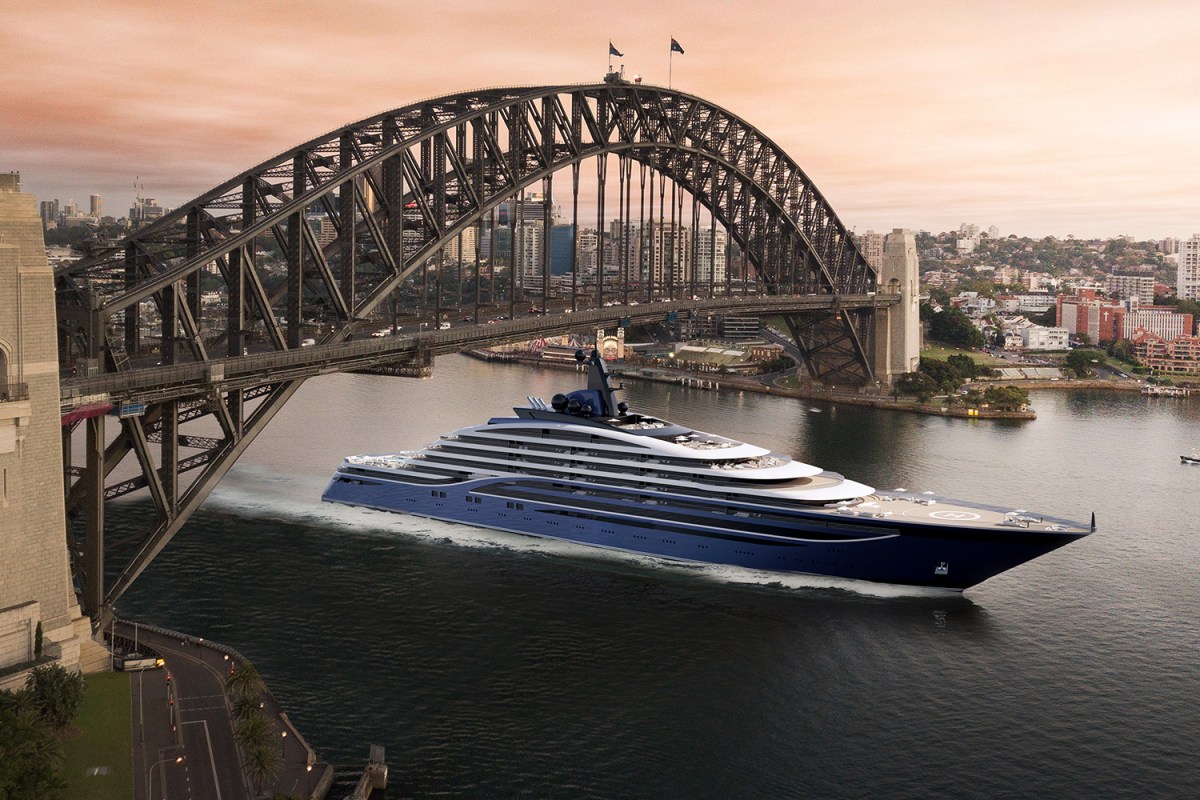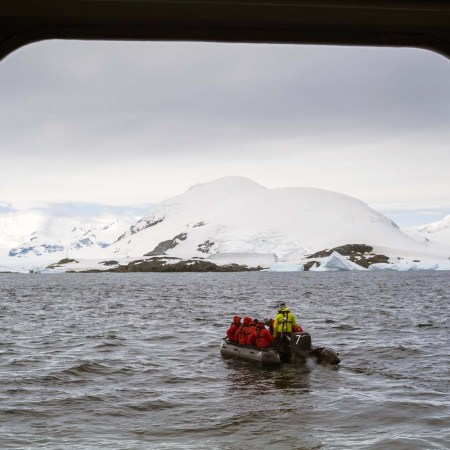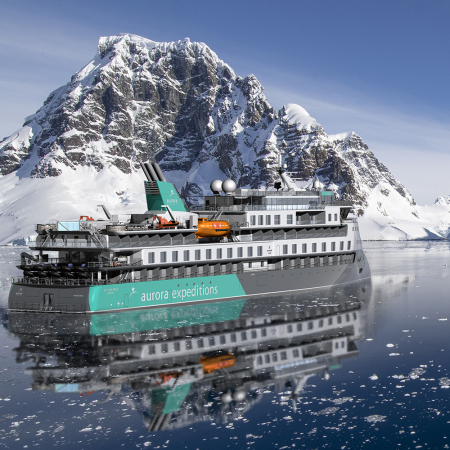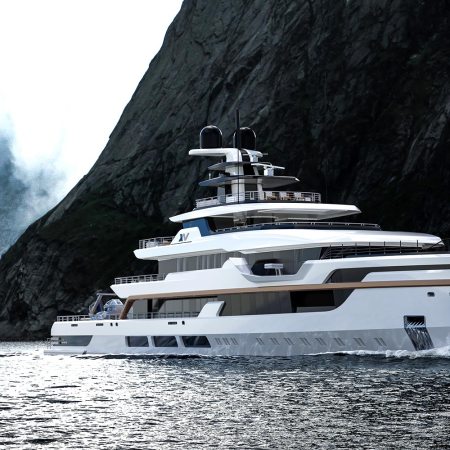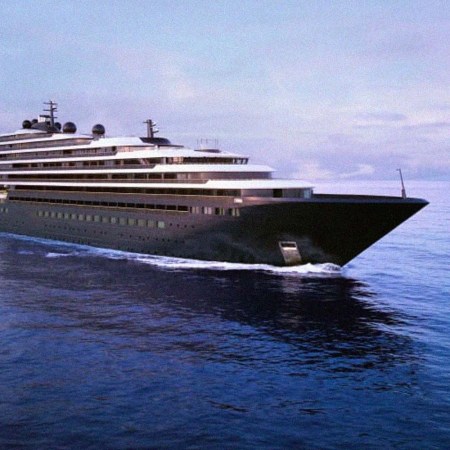When the Njord launches in 2027, the 948-foot vessel is bound to impress, in part because it’s designed by one of the world’s leading superyacht creators, Espen Oeino. What’s unusual about it is that, despite its prodigious scale, the ship has just 117 apartments.
That’s right, “apartments.” These are not cabins for rent, packed into every nook, many without even a view of the sea, as is often the case on your typical cruise ship. These are homes away from home, bought outright, their owners living aboard for months at a time. Some of these apartments have five bedrooms. Some are built over three floors.
This is the new generation of what the cruise industry has come to refer to as “residential ships.” Rather than buy a holiday home, instead you buy one that floats, circumnavigating the globe and going places few ships, and certainly no cruise liners, have gone before. The Njord has a draught shallow enough that it will be able to navigate not just the seas, but major river systems, and an ice-strengthened hull so it can take on Arctic waters.
Leif-Erik Hvide, chief strategy officer at Njord’s developer Ocean Residences, reckons that among those set to complete the purchase of an apartment on the ship, around 20% are billionaires, 50% “centi-millionaires,” with the rest worth merely tens of millions.
“Some of these people have had the superyacht lifestyle but come to realize all the headaches that come with it — the running costs, the fact it’s never where you want it to be when you want it to be, that it’s a fairly solitary experience,“ he says, “and they see a residential ship like the Njord as offering the best of that lifestyle without the problems. There’s a private club aspect to such a residential ship. You’re living with [like-minded] people, sharing the experiences with them.”
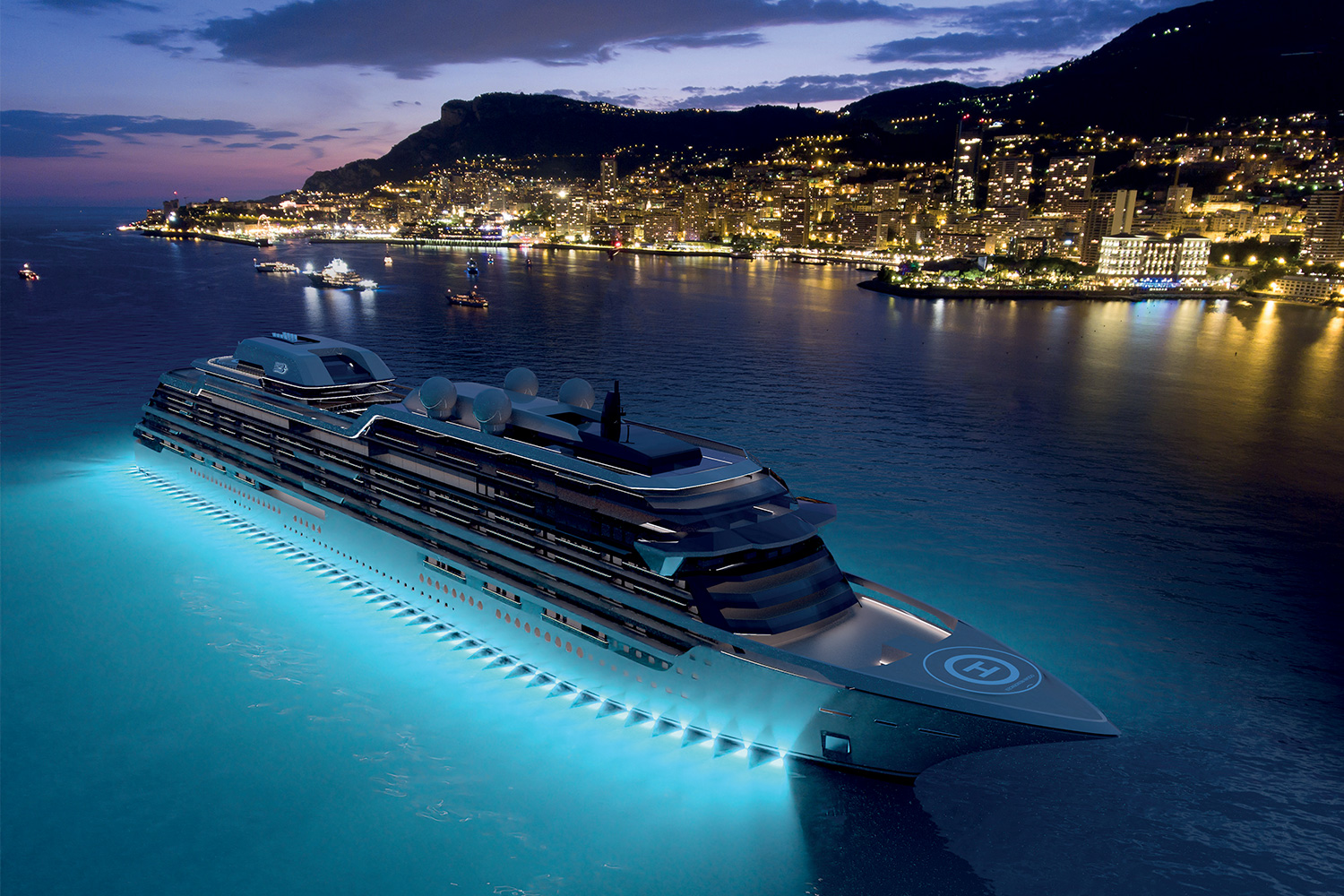
Betting Big on Residential Ships
Also in the pipeline is the 728-foot Somnio, a residential ship that will have just 39 apartments over six decks, with its developers already hoping to build a further two vessels.
“I was flabbergasted when I first heard of the idea of the ‘residential ship,’” concedes Erik Bredhe, one of the founders behind the Somnio project and a career captain of cruise ships. But it makes sense given polarizing shifts within the hospitality industry at large, towards either more economy or more opulence.
“These are all floating vessels,” he adds. “The difference, of course, is in the luxury, the level of services, and the sense of space, freedom and ownership.”
Covid has, it’s said, only boosted demand. While being on any cruise ship may possibly be the worst place you want to be in a pandemic, the catastrophe has for some underscored ideas of isolation, self-sufficiency, privacy and escape from the turmoil of the world, with the prospect of living very well for long stretches finding new appeal. Combine that with an uncertain global economy — such that the first quarter of this year showed a dramatic cooling off in the number of superyachts sold — and, for those with the means, owning an apartment on a ship starts to make more sense.
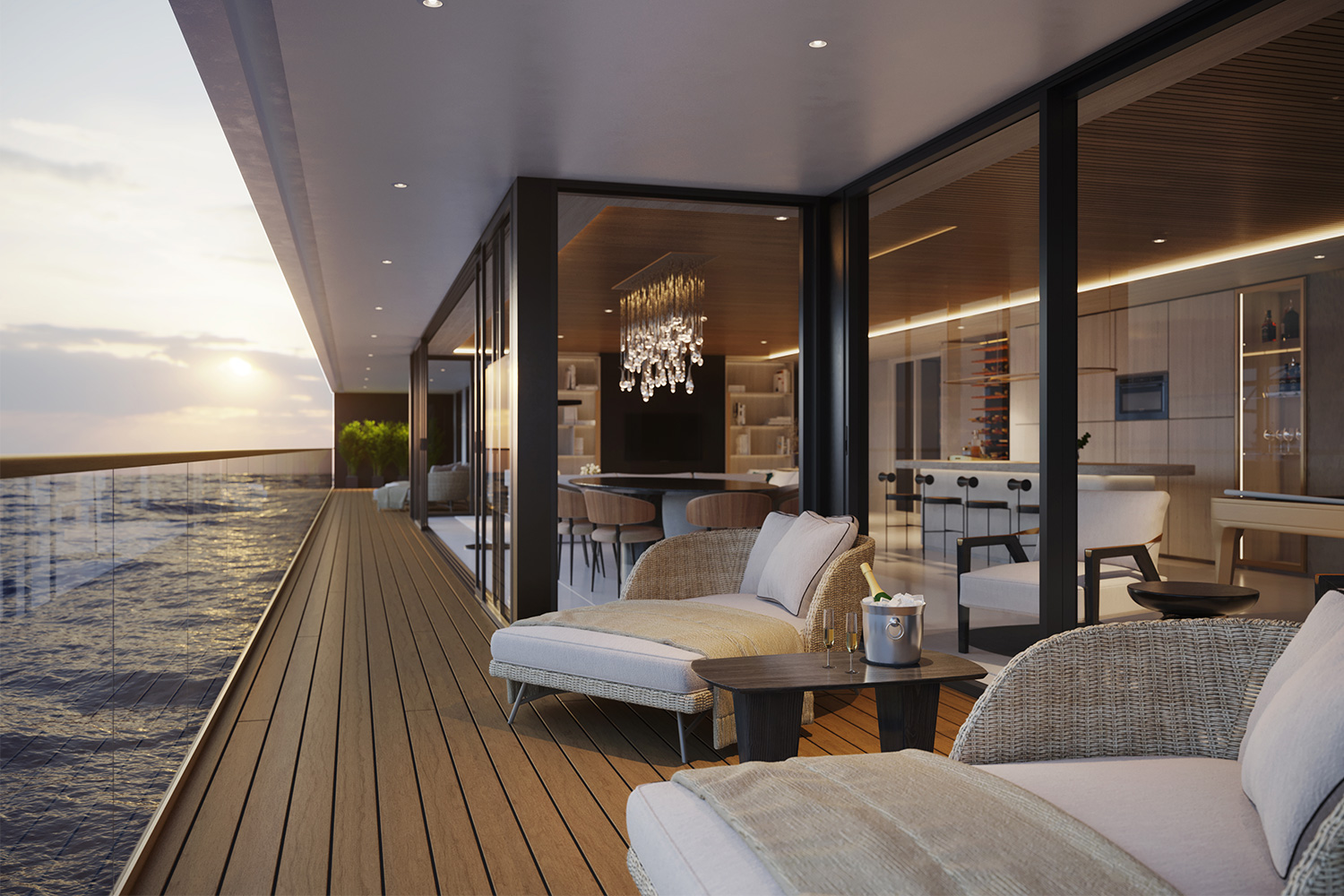
Laboratories, Libraries and Onboard Education
Although this is still a niche market — well, a niche of a niche — the early operators in it are looking to stand out in their own way.
The Somnio has pursued the long, low and lean lines of the superyacht aesthetic, and its creators are already claiming that it’s set to be the world’s largest superyacht when it’s launched, hopefully in 2024. The Njord, meanwhile, is offering its high-rolling residents a philanthropic benefit. The ship will come with a laboratory, atmospheric research station and on-board team of scientists for the study of the sea, so much of which remains uncharted. Naturally, it will have two mini submarines in order to assist in this venture.
Storylines, another residential ship operator, hopes to have its first vessel, the 738-foot, liquid natural gas-fueled Narrative, traveling around the world nonstop by 2026, encouraging its residents to work on outreach programs on each of its stops.
Seeking Shackleton’s “Little Voices” on a Two-Week Voyage to Antarctica
On a cruise with Abercrombie & Kent, our travel correspondent came face to face with towering icebergs, turbulent seas and the majesty of the White ContinentThe ship’s 530 “all-inclusive” residences are not for those looking for a bargain: a studio apartment starts around $1 million and a four-bedroom duplex at about $8 million, with owners able to rent their properties if they wish. The company claims that some floor plans are nearly sold out. The ship has a wellness center, of course, but also a 10,000-volume library, micro-brewery and bowling alley. More unexpectedly, it has its own accredited school for children.
“We don’t attract [typical] cruisers,” says Katie Drew-Jensen, Storylines’ executive VP of global operations, who estimates that around half of the Narrative’s residents will live onboard full-time. “Our youngest resident so far is in his 20s, but we have families, people in their 80s, retirees, but also digital nomads happy to work remotely, which is an idea we’ve all become used to. These are not people who just want to sip a Martini on the balcony. They want to get out and explore. [But] the fact is that travel isn’t fun — packing and unpacking, chasing flights and so on — and people also want to see the world from the comfort of their home.”
“People are looking for a new way of life,” she adds, “and I think when the realization kicks in that you can live in luxury on a floating city, then that will change everything [for the market].”
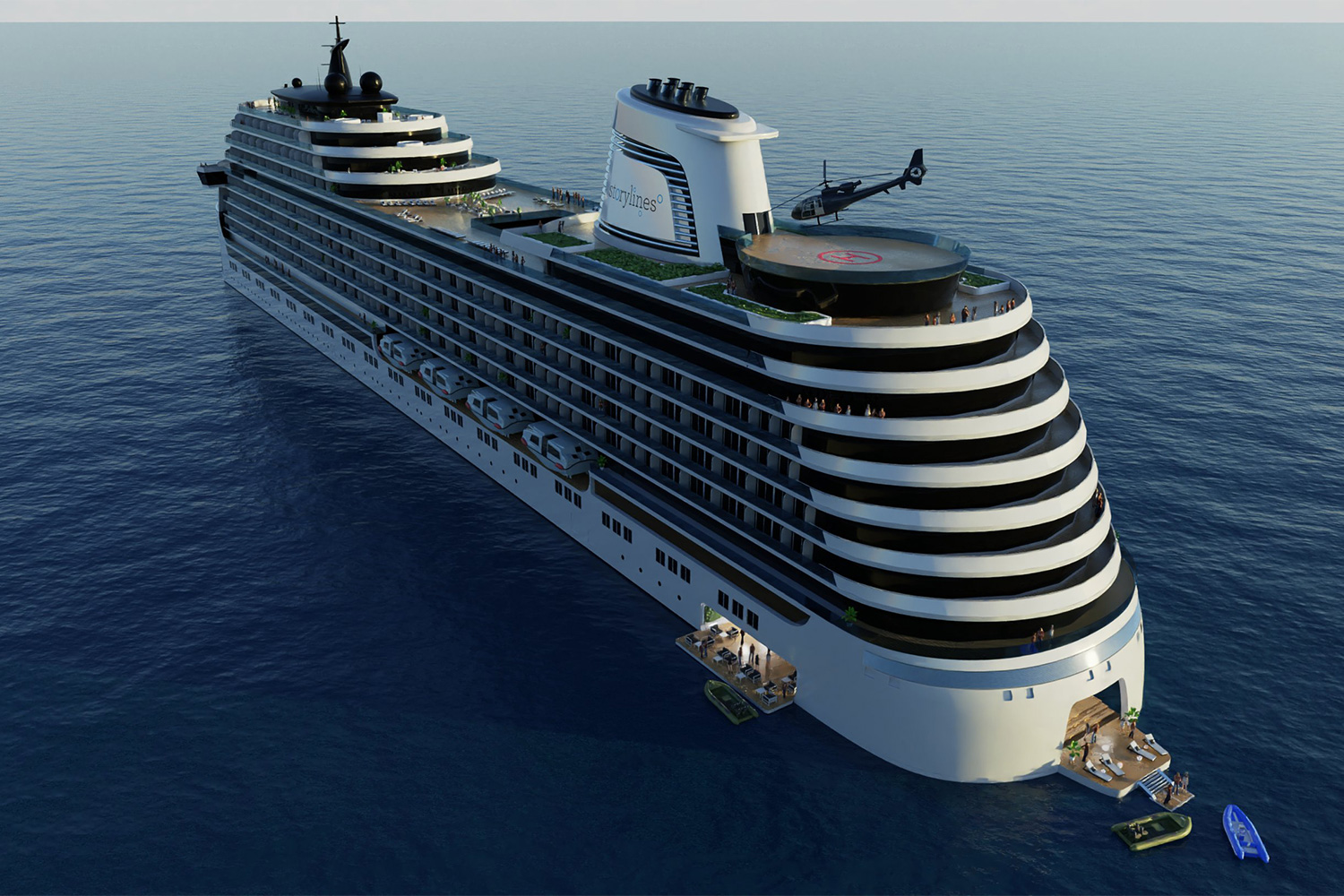
Look out too for the Utopia and the Dark Island — with (budget overboard!) apartment prices up to $135 million — both on their way. Apart from following a residential model, these ships have something else in common: they may be under construction, but they have yet to launch, so one might well claim that the market remains untested. Certainly it is not without its challenges.
“Let’s just say that it’s taken us years to evolve the project into something feasible from a technical, shipbuilding standpoint, but also something that meets the needs of the residents [in order to make it all viable],” says Njord’s Leif-Erik Hvide. “It’s taken that time to know what works and what doesn’t to create a sense of community, without making it feel commercialized.”
The World: The Original Home on the Ocean
While an entire market may not be established yet, there is a precedent for this type of oceanic living.
If a 644-foot ship that only carries 150 passengers sounds like a poor use of space — when the same size craft would typically carry closer to 900 — then consider that the pioneering residential ship The World has been in operation for more than 20 years. It putters around the world, calling at hard-to-reach destinations like French Polynesia, Hudson Bay and Easter Island. The residents form a committee that decides each year’s destinations.
Indeed, it was the experience of The World that, after a lot of hard groundwork, really set the template for the ships that are set to follow. Originally designed as part-owned and part-rented apartments, some small, some more palatial — creating what turned out to be an unhelpful class divide — it would later become clear that only a wholly-owned approach provided a workable economic model for The World; at least in creating the kind of on-board neighborhood of like minds that was, for many, the key selling point. In the end, owners staged a buyout to stop rentals.
“Creating a sense of real homeliness is important since most cruise liners have the feel of an entertainment resort,” says superyacht designer Espen Oeino. “For me, the real difference with [these residential ships] is in population density. Ultimately these are private homes — customized however their owners want them — but ones that travel, with the great appeal of not having to be in a different bed every night.” Not for nothing does he call the Njord “The World on steroids.”
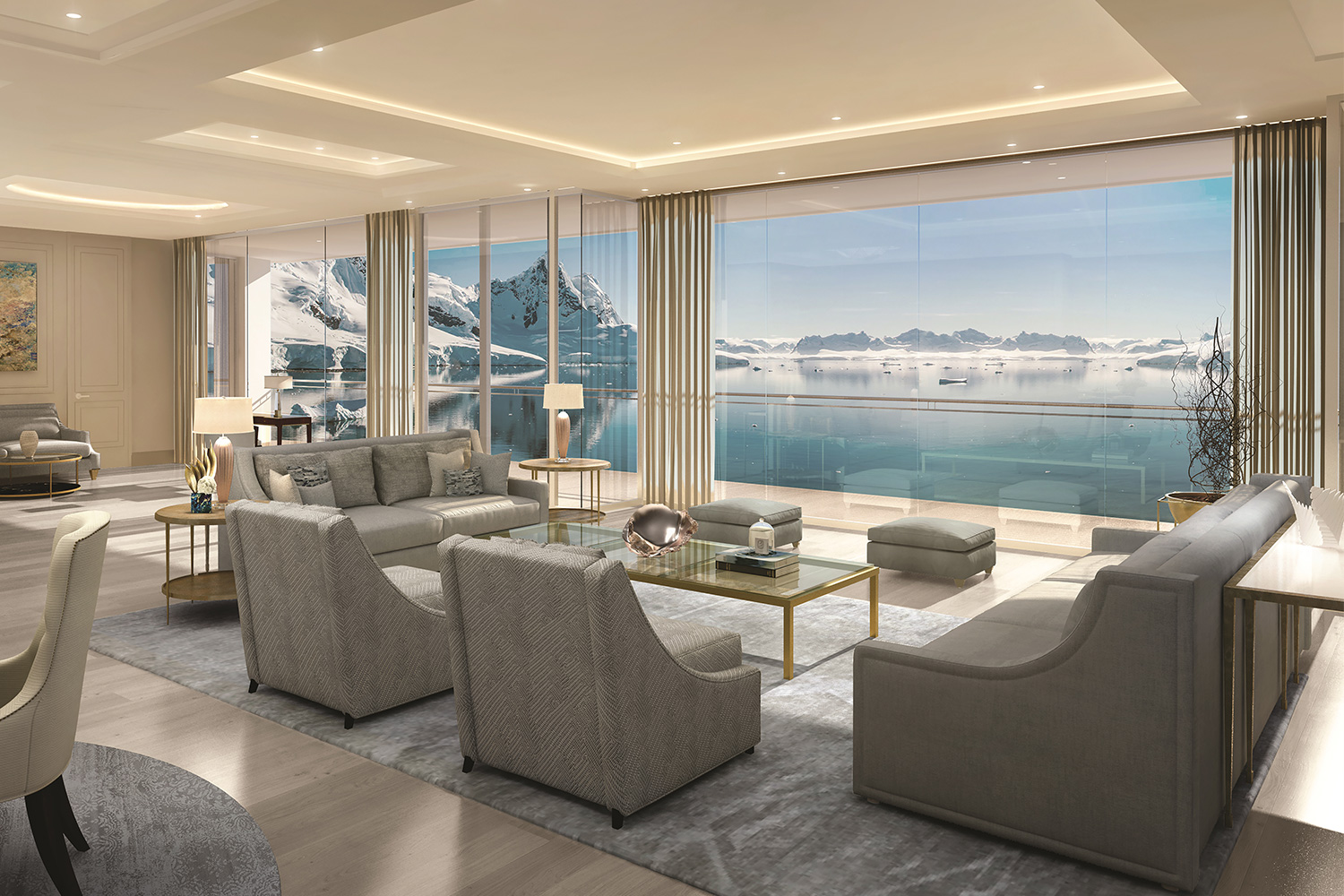
Can You Feel at Home on a Cruise Ship?
Of course, this is an idea that the cruise industry, of which residential ships might be considered a new offshoot, is still exploring, still tweaking. There’s a lot of hype. But more broadly, it’s an idea that the more mainstream cruise ship market is shifting to as well, to meet a growing call for smaller, more intimate vessels, as well as more upscale, more boutique hotel-style spaces.
“The residential ship is an amazing concept even if ships following The World have yet to come to fruition,” says Jason Gelineau, head of product development at the MSC Group’s Explora Journeys brand — an upscale cruise ship line founded in 2021 — and formerly of The World. “They’re trying to sell a dream, and that’s a hard way to raise funds from the kind of people who want to see what they’re getting, who already have multiple residences and for whom this is just another option, albeit one with a view that changes every day. Financially, the concept isn’t quite on solid legs yet.”
That’s one reason why Explora is striking a middle line with its pitch: four ships — the first of which, after some hiccups, set sail on its maiden voyage this August; the last of which expects to be at sea by 2026, each comprising some 460 or so cabins. What’s new is that around a fifth of these are what it calls penthouses or ocean residences. The latter are around 1,600 square feet, so bigger than your average two-bed New York apartment, and come with MSC’s answer to a butler. Then there’s also the so-called owner’s residence, a huge onboard apartment of 3,122 square feet. These are rented, not owned, for voyages of up to a month.
“I think this trend [towards more space and more luxury] was there prior to the pandemic, but it’s been accelerated since,” says Gelineau. “With travel restricted, people have wanted to maximize their travel opportunities now and for many that means doing it in comfort, with space for themselves and to entertain as they want.”
“I think there’s a sense of ‘Why live in a beautiful apartment for your home and then stay in something less than that for your vacation?’ And that’s the way the cruise industry is going,” he adds. “That’s what the people who have the funds to travel this way are after now. They want to be on a ship, but still feeling like they’re at home.”
This article was featured in the InsideHook newsletter. Sign up now.
